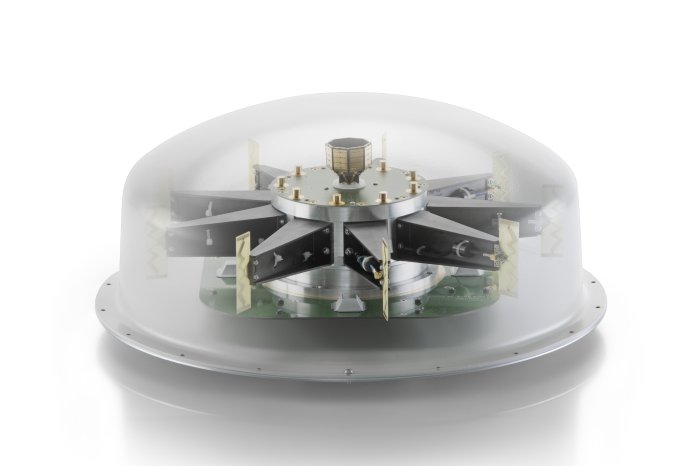For applications on the move, the ADFA 2 is easily attached and detached from a car roof with the aid of its magnetic base. A single cable links it to the SignalShark. It delivers precise results with the highest accuracy even without the vehicle correction tables that are usually required. Whilst still on the move, the measurement technician can superimpose a heatmap on a stored map on the SignalShark display as well as view the found direction. The powerful localization software in the device automatically indicates where the interference source is most likely to be located. No additional PC or assistance is required for this.
The heart of the ADFA 2 is an array of nine antenna elements (dipoles) arranged on a flat plane with a central omnidirectional reference antenna, which allows the measurement technician to observe the signal spectrum during direction finding. The principle of automatic direction finding using single channel receivers is based on the phase difference between the antenna elements. The nine dipoles are here measured against the central reference antenna. The greater the distances between them and thus the detected phase difference, the more reliable the bearings. As a result of the extended frequency range at both ends of the scale there is a new lower plane for the range from 10 to 200 MHz and an upper one for the range from 2.7 to 8 GHz. While the external diameter of only 480 millimeters is unchanged, these additional planes mean that the ADFA 2 weighs 6.5 kg, which is just 1 kg more than the ADFA 1 (200 MHz – 2.7 GHz).



